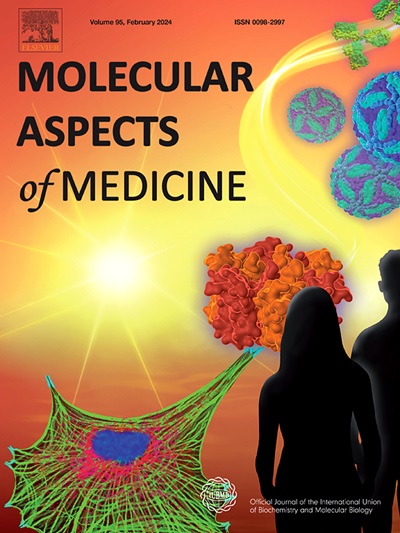Liver aging: underlying mechanisms and therapeutic strategies
IF 10.3
2区 医学
Q1 BIOCHEMISTRY & MOLECULAR BIOLOGY
引用次数: 0
Abstract
The accelerating pace of global aging underscores the urgent need to address age-related physiological decline and its associated pathologies. The liver, a central organ for metabolic and immune regulation, undergoes structural and functional deterioration with advanced age, positioning liver aging as a critical concern in geriatric medicine. Due to the liver's cellular heterogeneity and complex physiology, our understanding of its aging mechanisms remains fragmented, lacking an integrated framework to consolidate factors such as oxidative stress, inflammaging, metabolic reprogramming, genomic instability, and epigenetic dysregulation. This review systematically summarizes the physiological processes and molecular mechanisms of liver aging, explores its contributions to disease progression, and discusses current intervention strategies, including dietary and exercise regimens, pharmacological therapies, and gene-editing technologies. By synthesizing existing evidence, this review provides a theoretical framework to advance the understanding of the pathophysiological mechanisms underlying liver aging and inform the development of innovative anti-aging interventions.
肝衰老:潜在机制和治疗策略
全球老龄化的加速强调了解决与年龄相关的生理衰退及其相关病理的迫切需要。肝脏是代谢和免疫调节的中枢器官,随着年龄的增长,肝脏的结构和功能会恶化,这使得肝脏衰老成为老年医学的一个关键问题。由于肝脏细胞的异质性和复杂的生理机能,我们对其衰老机制的理解仍然是碎片化的,缺乏一个整合的框架来整合诸如氧化应激、炎症、代谢重编程、基因组不稳定和表观遗传失调等因素。本文系统总结了肝脏衰老的生理过程和分子机制,探讨了其对疾病进展的贡献,并讨论了当前的干预策略,包括饮食和运动方案、药物治疗和基因编辑技术。通过综合现有证据,本综述提供了一个理论框架,以促进对肝脏衰老的病理生理机制的理解,并为创新抗衰老干预措施的发展提供信息。
本文章由计算机程序翻译,如有差异,请以英文原文为准。
求助全文
约1分钟内获得全文
求助全文
来源期刊

Molecular Aspects of Medicine
医学-生化与分子生物学
CiteScore
18.20
自引率
0.00%
发文量
85
审稿时长
55 days
期刊介绍:
Molecular Aspects of Medicine is a review journal that serves as an official publication of the International Union of Biochemistry and Molecular Biology. It caters to physicians and biomedical scientists and aims to bridge the gap between these two fields. The journal encourages practicing clinical scientists to contribute by providing extended reviews on the molecular aspects of a specific medical field. These articles are written in a way that appeals to both doctors who may struggle with basic science and basic scientists who may have limited awareness of clinical practice issues. The journal covers a wide range of medical topics to showcase the molecular insights gained from basic science and highlight the challenging problems that medicine presents to the scientific community.
 求助内容:
求助内容: 应助结果提醒方式:
应助结果提醒方式:


